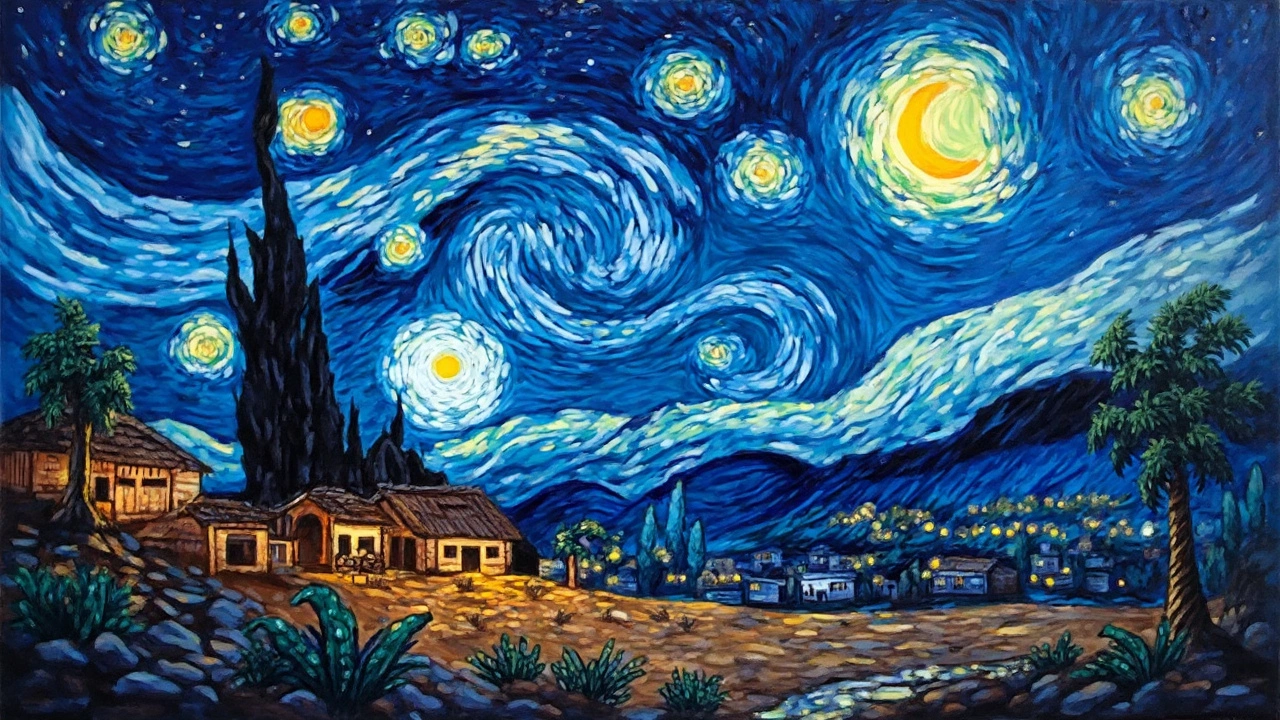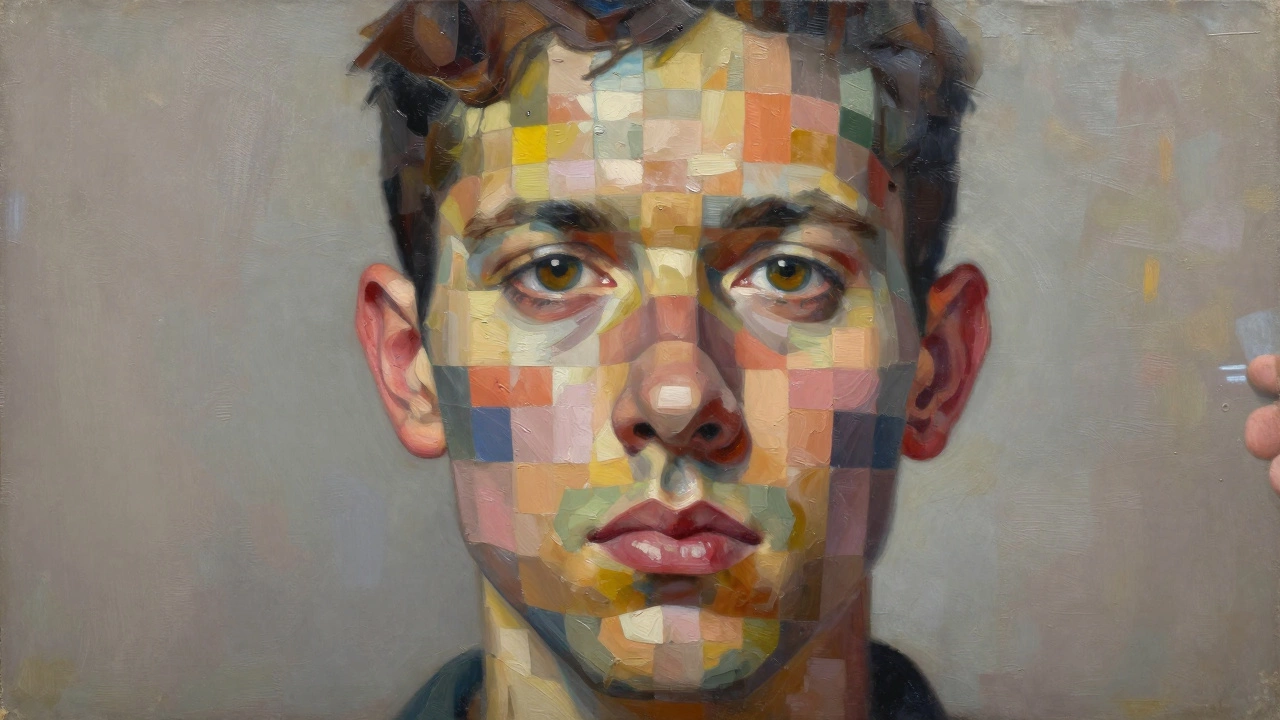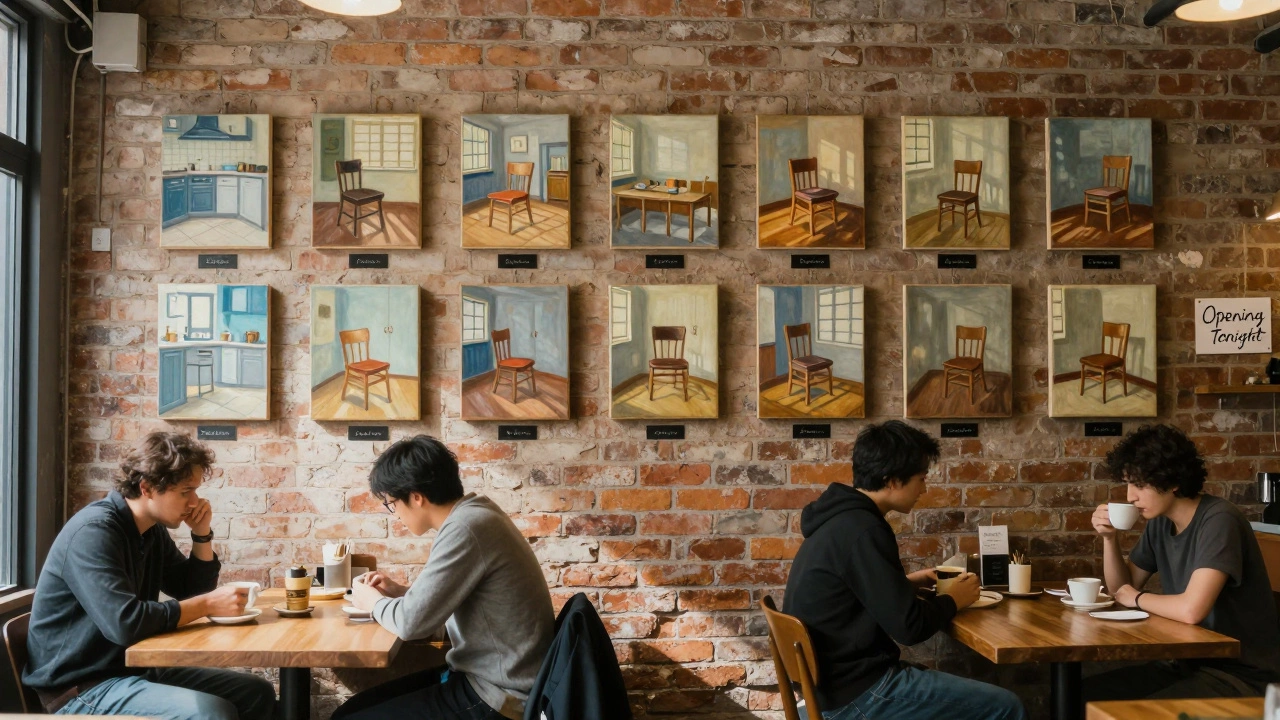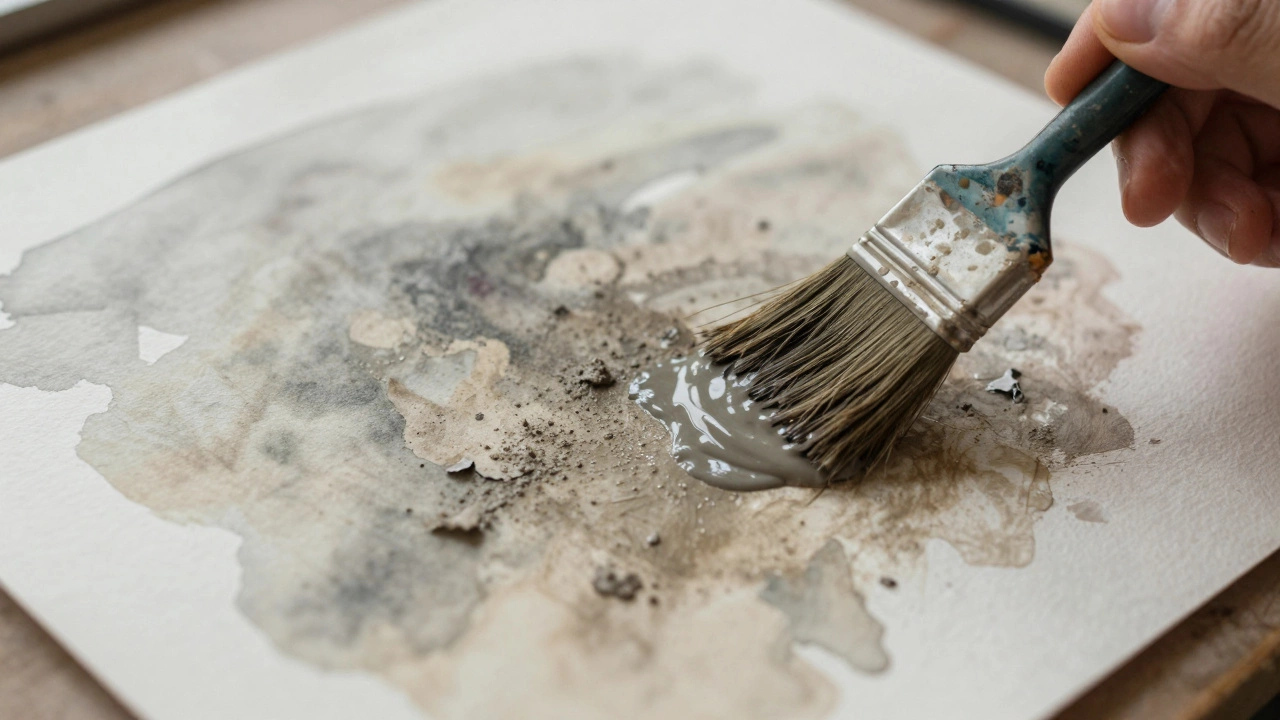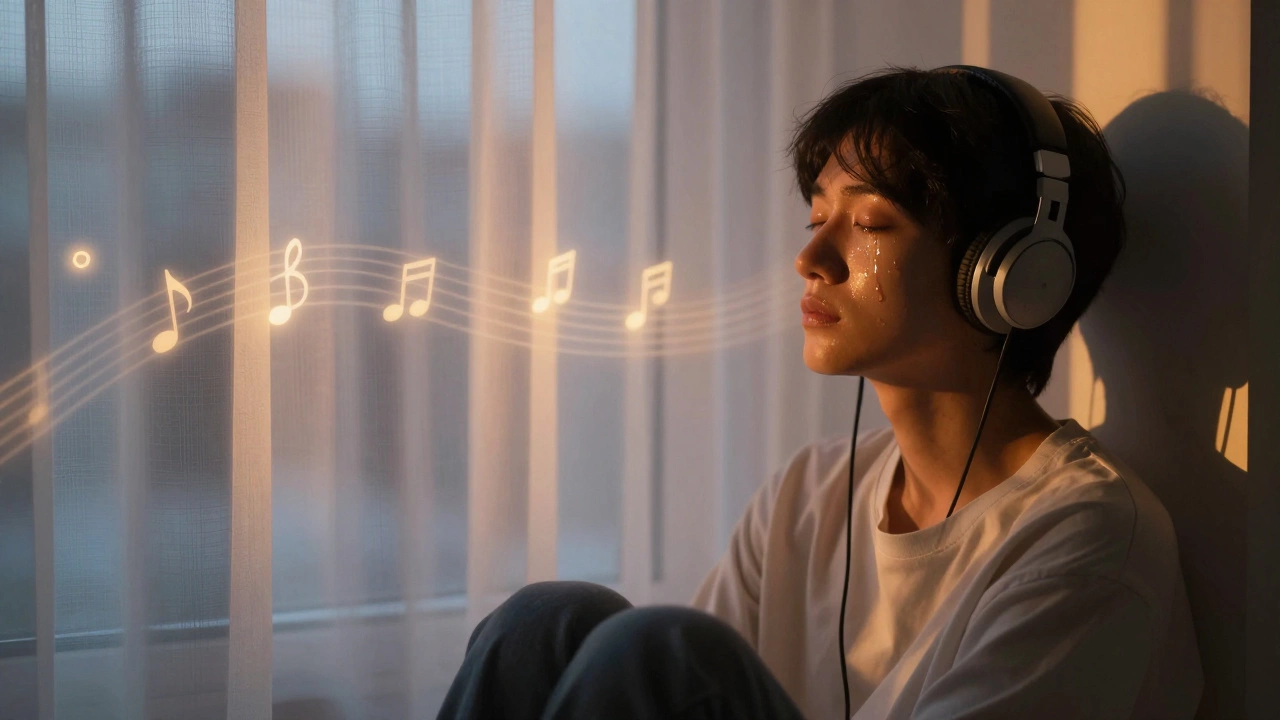Ever wondered what kind of paint Vincent van Gogh used for his masterpiece, Starry Night? Spoiler: it wasn't watercolor. Van Gogh's work primarily utilized oil paints, a popular medium during his time, thanks to its vibrant colors and longevity.
While exploring Starry Night, we dive into the fascinating array of pigments and brushes that formed Van Gogh's toolkit. To create our own versions or simply appreciate the nuances of his technique, understanding the constraints and choices of his color palette can offer surprising insights.
Van Gogh's bold use of oil paints allowed him to layer and blend colors with an intensity that still captures viewers today. Imagine the swirling night sky—it wouldn't have the same impact without the thickness and texture oil paint provides. But there's more to it than meets the eye; let's explore what made his brilliant hues pop.
- Van Gogh’s Paint Toolbox
- Paint Composition
- Colors of Starry Night
- Painting Techniques
- Recreating Van Gogh’s Palette
Van Gogh’s Paint Toolbox
Vincent van Gogh, ever the cutting-edge artist, had a toolbox that was nothing short of fascinating. Crafting the vivid imagery of Starry Night required a keen understanding of color and the right materials. Van Gogh predominantly used oil paints, which, unlike watercolors, lend themselves to the thick, expressive brushstrokes he’s known for.
An important thing to know is that Van Gogh wasn't just using any oil paints. He opted for premium, ready-made tube paints, a relatively new invention in his time. This innovation meant he could paint outdoors, capturing nature with unparalleled ease. His favorite pigments included ultramarine blue, cobalt blue, chrome yellow, and emerald green—these were the vibrant colors that brought his swirling night skies to life.
Brushes and Tools
His choice of brushes was deliberate too. Van Gogh favored hog bristle brushes for their stiffness, which allowed him to lay down thick, textured strokes. Palette knives also played a key role, offering him the versatility to sculpt his paint, building that unforgettable texture.
“I use color more arbitrarily to express myself forcefully.” — Vincent van Gogh
Ever curious about the practicality behind his choices? The emerging popularity of paint tubes allowed Van Gogh to work with a certain spontaneity, something that traditional studios with their cumbersome mixing methods couldn’t replicate. This really cut down his prep time and let him focus on capturing the scene.
In the Studio
Working in his studio, Van Gogh would often mix his paints directly on the canvas—a technique that amplifies the texture and depth of his paintings. The intense swirling patterns in Starry Night give us a clear visual of this method; the energy practically leaps off the canvas.
Still intrigued? Consider trying Van Gogh’s painting techniques by exploring similar tools and paints. Oil paints are definitely worth the try if you're keen on achieving rich colors and textures in your work.
Paint Composition
When you look at the swirls and vibrant colors of Starry Night, it's the paint composition that really makes each element stand out. Vincent van Gogh had access to a variety of pigments, each providing unique characteristics to his paintings. Unlike today's artists, Van Gogh used pigments that were both naturally derived and synthetically produced, offering a rich diversity in his works.
Oil paints were Van Gogh's go-to choice, and they played a huge role in the depth and texture of Starry Night. Each tube of oil paint was composed of pigment mixed with a medium, usually linseed oil, which allowed the paint to have a smooth, buttery consistency. This made it easier for Van Gogh to lay down thick layers and create those expressive, textured strokes he's famous for.
Key Pigments
Some of the standout colors in Starry Night—like the vibrant yellows and deep blues—came from specific pigments. Van Gogh used cadmium yellow, a bright and durable pigment, perfect for depicting the radiant glow of stars. For those deep, dreamy blues, ultramarine blue was his favorite choice. This particular pigment was esteemed for its bold color, though it was rather expensive at the time.
Another interesting pigment in use was chrome yellow, often used interchangeably with cadmium yellow, but it had a more lemon-like hue. These yellows helped Van Gogh capture light's warmth in the night sky.
Earthy Tones
For elements like the cypress trees, Van Gogh relied on earthy pigments such as ochres and burnt sienna. These pigments gave him a natural palette that contrasted sharply with the bright night sky, drawing attention to the landscape's grounding beauty.
| Pigment | Color | Use in Starry Night |
|---|---|---|
| Cadmium Yellow | Bright Yellow | Radiant Stars |
| Ultramarine Blue | Deep Blue | Night Sky |
| Chrome Yellow | Lemon Yellow | Subtle Light Accents |
Each pigment was chosen intentionally, contributing to the masterpiece’s vivid imagery. Understanding these choices can offer us insight into how Van Gogh's color composition influenced the emotional tone of Starry Night—a crucial aspect for anyone attempting to recreate or simply appreciate this incredible artwork.
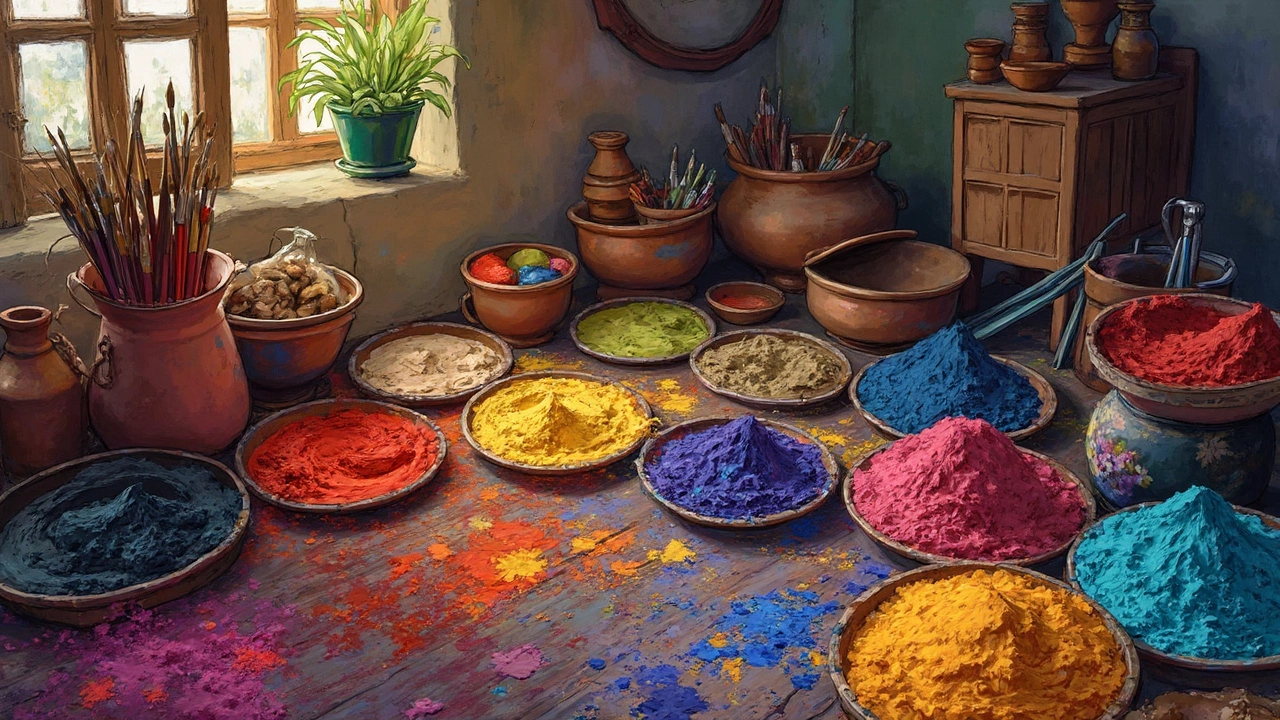
Colors of Starry Night
You can't talk about Starry Night without diving into its unforgettable colors. Van Gogh's choice of hues wasn't random; it was carefully considered and quite inventive for his time. The painting's swirling blues and vibrant yellows are iconic, but there's a whole spectrum at play here.
Spectral Symphony
Van Gogh primarily used a mix of cobalt blue and ultramarine for that mesmerizing night sky. These were high-quality pigments back then, known for their outstanding vibrancy and durability. Combined, they create a deep, rich blue that seems to dance across the canvas. That's how he captured the cool serenity of night while making it pulsate with life.
The stars and moon capture attention with their glowing vitality, achieved using chrome yellow. This pigment was picked for its high opacity and brightness. Van Gogh loved yellows in general—they symbolized hope and warmth for him.
Complementary Contrasts
Besides blues and yellows, you’ll also spot greens and purples woven into the scene, adding depth and complexity. These hues create contrasts that make the stars shine even brighter. Van Gogh was a master at using complementary colors to generate visual excitement.
Color Composition Table
| Color | Paint Used |
|---|---|
| Sky Blue | Cobalt Blue, Ultramarine |
| Star Yellow | Chrome Yellow |
| Tree Green | Viridian, Emerald Green |
| Building Purple | Madder Lake |
In reimagining the Starry Night colors, it's crucial for artists to think about these color choices and how they create emotion in the artwork. The magic lies not just in each individual paint, but how they're all orchestrated together. Want to recreate Van Gogh’s magic? Start by experimenting with how these colors interact on your canvas.
Painting Techniques
Van Gogh's ability to bring life to the canvas was almost magical, and a big part of that was his unique painting techniques. He was known for using short, choppy brushstrokes to create movement and emotion in his work. This approach allowed him to convey a dynamic sense of energy, particularly evident in Starry Night.
If you take a closer look at the painting, you'll notice how the swirling sky seems almost alive. Van Gogh achieved this by layering thick globs of paint, a technique known as impasto. This added texture and dimension, making the stars and moon glow against the turbulent sky. The oil paints had a buttery consistency, ideal for such bold strokes.
Layering Colors
One of the secrets behind the vibrant colors in Starry Night is Van Gogh’s method of layering. He started with darker shades and gradually added lighter hues on top. This allowed him to play with light and shadow, enhancing the luminescence of the celestial bodies.
Creating Depth with Color
Van Gogh had a remarkable way of using just the right tones to bring depth to his paintings. He often paired complementary colors, like the blues and yellows in Starry Night, to make them stand out even more. These color contrasts give the painting its vibrant, almost electric quality.
Interested in trying something similar? Here's a simple tip: start by choosing a limited palette and get comfy with mixing your own colors to create subtle variations. Bold brushstrokes will help you add texture and dimension too.
While we can't all be Van Gogh, experimenting with these techniques might inspire you to find your own style. Happy painting!
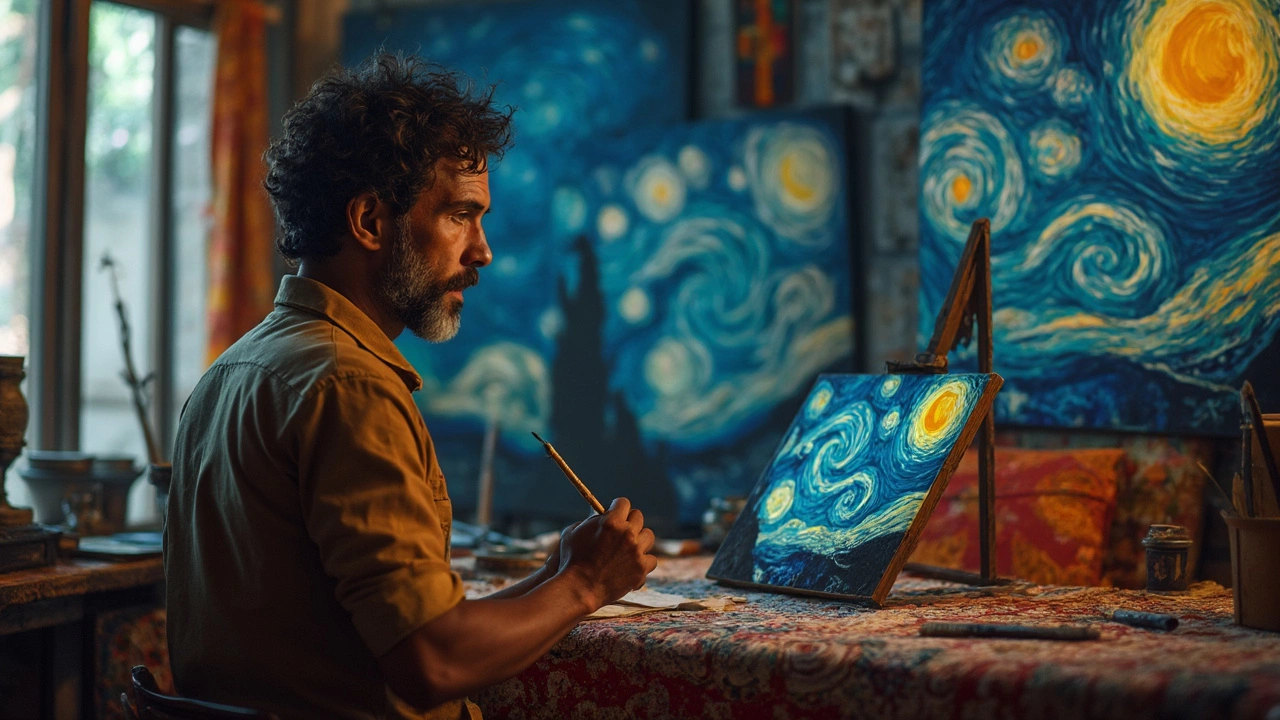
Recreating Van Gogh’s Palette
So, you're itching to get that Van Gogh flair into your own art. Recreating that Starry Night vibe isn't just about choosing vibrant colors. It's also about understanding his techniques and the way he applied paint to the canvas.
Van Gogh’s palette was exceptionally unique for his time, overflowing with a range of intense and sometimes unusual colors. He famously used bright yellows, deep blues, fiery oranges, and rich greens. These were often the result of layering and mixing on the canvas itself rather than mixing paints beforehand.
Choosing the Right Paints
First, let's talk paints. Van Gogh relied heavily on oil paints, which offered the robust texture and dynamic colors visible in his works. If you're interested in capturing the essence of Van Gogh's painting, oil paints are the way to go. However, if you're strictly into watercolor paintings, experimenting with layering and color blending is key since watercolors won't provide the same texture.
Essential Colors to Start With
You don't need a truckload of colors. Start with some of Van Gogh's favorites:
- Chrome Yellow
- Ultramarine
- Emerald Green
- Vermilion
- Prussian Blue
These were among the vibrant and somewhat modern colors available in Van Gogh's time, and today they're still key to achieving those striking Starry Night hues.
The Van Gogh Technique
The magic of Van Gogh's Starry Night isn't just in the colors. It's also in the swirling, dynamic brushstrokes. To even come close to recreating this, use thick brushes and apply paint boldly. Don't shy away from creating texture. Van Gogh was known for his dramatic and expressive strokes, so get playful with it!
| Color | Type | Known Use in Starry Night |
|---|---|---|
| Chrome Yellow | Oil | Stars and moon |
| Ultramarine | Oil | Sky |
| Prussian Blue | Oil | Sky |
| Emerald Green | Oil | Trees |
Remember, Van Gogh's art was less about precision and more about emotion. So while you can strive for an accurate palette, let your imagination run wild on the canvas. After all, art is as much about feeling as it is about color.
